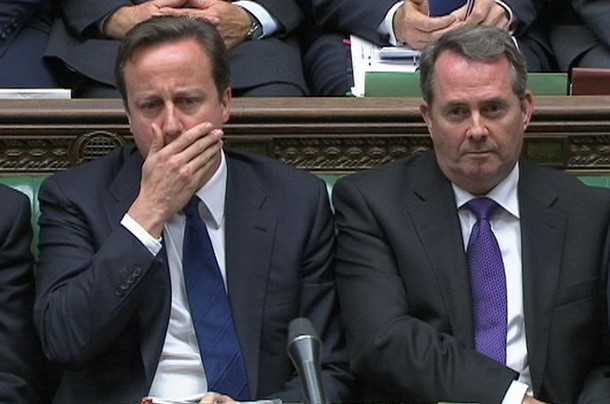
From the Office of the Prime Minister: The following excerpts from Prime Minister David Cameron’s statement to the House of Commons on the Strategic Defence and Security Review are arranged according to changes in funding.
Overview: Over four years the defence budget will rise in cash terms and fall by only 8 per cent. And it will meet the NATO 2 per cent of GDP target for defence spending throughout the next four years.
Programs not being changed
Afghanistan: I want to be clear there is no cut whatsoever in the support for our forces in Afghanistan. The funding for our operations in Afghanistan comes not from the budget of the Ministry of Defence but instead from the Treasury Special Reserve. So the changes to the Ministry of Defence that result from today’s Review will not affect this funding. Furthermore, every time the Chiefs have advised me that a particular change might have implications for our operations in Afghanistan either now or in the years to come I have heeded that advice.
Attack submarines and destroyers: We are procuring a fleet of the most capable nuclear powered hunter-killer astute class submarines anywhere in the world. … We will complete the production of six Type 45 destroyers one of the most effective multi-role destroyers in the world.
Programs with increasing funding
Conflict Prevention: We will expand our capability to deploy military and civilian teams to support stabilisation efforts and build capacity in other states. And we will double our investment in aid for fragile and unstable countries so by 2015 just under a third of the budget of the Department for International Development will be spent on conflict prevention.
Cyber security: Over the next four years, we will invest over half a billion pounds of new money in a national cyber security programme.
Special Forces: We are significantly increasing our investment in our Special Forces to ensure they remain at the leading edge of operational capability prepared to meet current and future threats, and maintaining their unique and specialist role.
Programs with decreasing funding
Ministry of Defense: So the MOD will cut its Estate, dispose of unnecessary assets, renegotiate contracts with industry. … and cut its management overheads, including reducing civilian numbers in the MOD by 25,000 by 2015. … Taken together, all these changes in the MOD will save £4.7 billion over the Spending review period.
Nimrod: Take the Nimrod programme for example. It has cost the British taxpayer over £3bn.The number of aircraft to be procured has fallen from 21 to 9. The cost per aircraft has increased by over 200 per cent and it’s over 8 years late. Today we are cancelling it .
British Army: Our ground forces will continue to have a vital operational role so we will retain a large well-equipped Army, numbering around 95,500 by 2015 that is 7,000 less than today. We will continue to be one of very few countries able to deploy a self-sustaining properly equipped Brigade-sized force anywhere around the world and sustain it indefinitely if needs be. And we will be able to put 30,000 into the field for a major, one off operation. In terms of the return from Germany half our personnel should be back by 2015 and the remainder by 2020. And tanks and heavy artillery numbers will be reduced by around 40%.
British Navy: Total naval manpower will reduce to around 30,000 by 2015. And by 2020 the total number of frigates and destroyers will reduce from 23 to 19 but the fleet as a whole will be better able to take on today’s tasks from tackling drug trafficking and piracy to counter-terrorism. …
We will build both carriers, but hold one in extended readiness. We will fit the “cats and traps” – the catapults and arrestor gear to the operational carrier. This will allow our allies to operate from our operational carrier and allow us to buy the carrier version of the Joint Strike Fighter which is more capable, less expensive, has a longer range and carries more weapons. …
As a result we can: extend the life of the Vanguard class so that the first replacement submarine is not required until 2028; reduce the number of operational launch tubes on those new submarines from 12 to eight; reduce the number of warheads on our submarine at sea from 48 to 40; and reduce our stockpile of operational warheads from less than 160 to fewer than 120. …
But as a result of the changes to the programme, the decision to start construction of the new submarines need not now be taken until around 2016. We will save around £1.2 billion and defer a further £2 billion of spending from the next ten years.
British Air Force: We have decided to retire the Harrier which has served this country so well for 40 years. The Harrier is a remarkably flexible aircraft but the military advice is that we should sustain the Tornado fleet as that aircraft is more capable and better able to sustain operations in Afghanistan.
RAF manpower will also reduce to around 33,000 by 2015. Inevitably this will mean changes in the way in which some RAF bases are used but some are likely to be required by the Army as forces return from Germany. …
Mr Speaker, by the 2020s, the Royal Air Force will be based around a fleet of two of the most capable fighter jets anywhere in the world a modernised Typhoon fleet fully capable of air-to-air and air-to-ground missions; and the Joint Strike Fighter, the world’s most advanced multi-role combat jet. This fleet will be complemented by a growing fleet of Unmanned Air Vehicles. And the A400M transport aircraft together with the existing fleet of C17 aircraft and the Future Strategic Tanker Aircraft will allow us to fly our forces wherever they are needed in the world. (photo: Reuters)
Image: reuters%2010%2020%2010%20David%20Cameron%20Liam%20Fox.jpg
